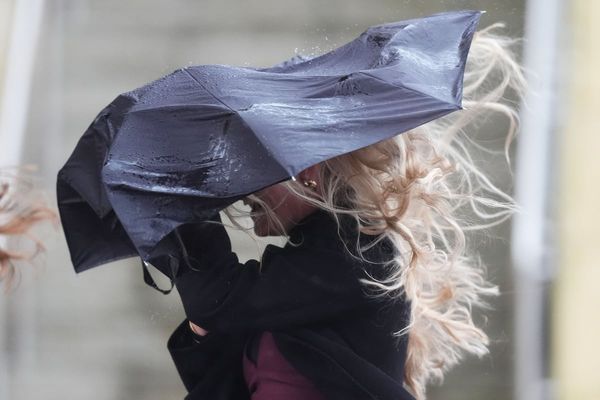
New South Wales will seek an exemption from its obligations to deliver the final stage of the Murray-Darling Basin plan, a move that could leave the environment short-changed millions of litres of water.
NSW will not meet a June 2024 deadline to deliver the last 25% of water savings of the plan, to be achieved through water-saving projects.
It is also behind on other key elements of the plan.
“NSW has been working hard to achieve as much as possible by 2024, however the reality is more time and funding is needed to deliver the outcomes intended under the basin plan,” the NSW water minister, Kevin Anderson, said.
“I will be raising this issue at [next month’s] ministerial council where I will call for more time and flexibility and will be arguing strongly to represent the interest of regional communities in NSW.”
The declaration sets the stage for a showdown with the other basin states and poses a test for the new federal water minister, Tanya Plibersek. She must decide whether to give NSW the concessions it is seeking at the expense of the environment, or use the tough penalties that are built into the plan.
A failure by a state to deliver water for environmental flows can trigger buybacks of entitlements from the agricultural sector.
But more buybacks will be vehemently opposed by farmers and some communities along the river system, particularly in cotton- and rice-growing areas. In 2010 farmers in Griffith burned copies of the basin plan in protest at buybacks.
“Buybacks would run the risk of collapsing food and fibre production in South Australia, Victoria, and southern NSW,” Anderson said. “This is why NSW has been calling for the basin plan to focus on outcomes, not numbers.”
When the plan was agreed to in 2007, states were expected to deliver 605GL of water for the environment through projects that reduced evaporation or used water more effectively.
There are 32 of these, known as sustainable diversion limit adjustment mechanism projects (SDLAM), of which 21 are in NSW or run jointly with Victoria.
But as the $13bn basin plan nears its conclusion in 2024, it has become evident that many of the projects have not begun, or have been altered so significantly that they will not deliver anything like the amount of water promised by NSW.
For example, NSW proposed four years ago to shrink the surface area of the Menindee lakes and make them deeper, to save 106GL of water by reducing evaporation.
However, it was always doubtful how much water the project would save and it was opposed by the local community because it diminished the town’s main tourist asset and would have destroyed an important sacred site.
At estimates last month, Anderson appeared to indicate the NSW government was now proposing a suite of other projects instead, known as the Better Baaka.
They include more modest changes to the Menindee lakes regulator gates to allow one lake to be kept full, fish ladders, a visitor’s centre in the town and some road upgrades. There is no indication of how these would improve flows in the Darling.
Instead, Anderson appears to want to redefine the goals of the basin plan.
“What I think we need to take into consideration here is the broader concept of water recovery and making our rivers healthy right across the basin, from the north right through to the south,” he told estimates on 2 September. “I’m asking for the basin plan to be reviewed. I think that the volumetric number that was set 10 years ago doesn’t reflect the environment that we are now in,” he said, referring to the drought that ended two years ago.
The other major NSW project, the Yanco Creek modernisation, is also running behind schedule. It aims to improve connections between the Murrumbidgee and the Murray, and was intended to save up to 35GL of water.
But 20 months from the end of the plan, it is still in the “concept design phase”.
The Murray-Darling Basin Authority will release a progress report on SDLAM projects in November.
NSW is also running very late on catchment-by-catchment water resource plans, which set out detailed rules on water sharing. They were supposed to be finalised by 2019, but only seven of NSW’s 20 plans have been submitted to the commonwealth, and only one has been accredited – that occurred on Wednesday.

Another element of the plan to provide 450GL water to the southern lakes of the Murray – the price South Australia demanded for signing on in 2007 – is also way behind schedule. It has yielded just 2.6GL so far.
Plibersek issued a stark warning in response to NSW’s position, saying every jurisdiction needed to play its part.
“The NSW government has had nearly 10 years to deliver on the Murray Darling Basin Plan and the commitments it signed up for,” she said.
South Australia is expected to lead the push for Plibersek to take a hard line against NSW’s plea for concessions.
“The basin plan outlines the absolute minimum amount of water recovery needed and basin jurisdictions have had plenty of time to deliver on their commitments,” said South Australia’s deputy premier and water minister, Susan Close.
“If basin states are not able to meet their commitments, then I’d urge the commonwealth to intervene to recover the remaining water through whatever means required,” she said.
The South Australian Greens senator Sarah Hanson-Young said NSW never intended to deliver on the plan.
“With the National party in charge of the federal water portfolio, NSW was given cover to do the bidding of corporate irrigators while running down the clock to 2024. It’s time for the federal government to hold NSW to account on this intentional undermining of the basin plan,” she said. “No more delays, no more excuses.”
Close said buybacks were the cheapest and most efficient way to return water to the system.
“We know for a fact that there are willing sellers within basin communities,” she said.







